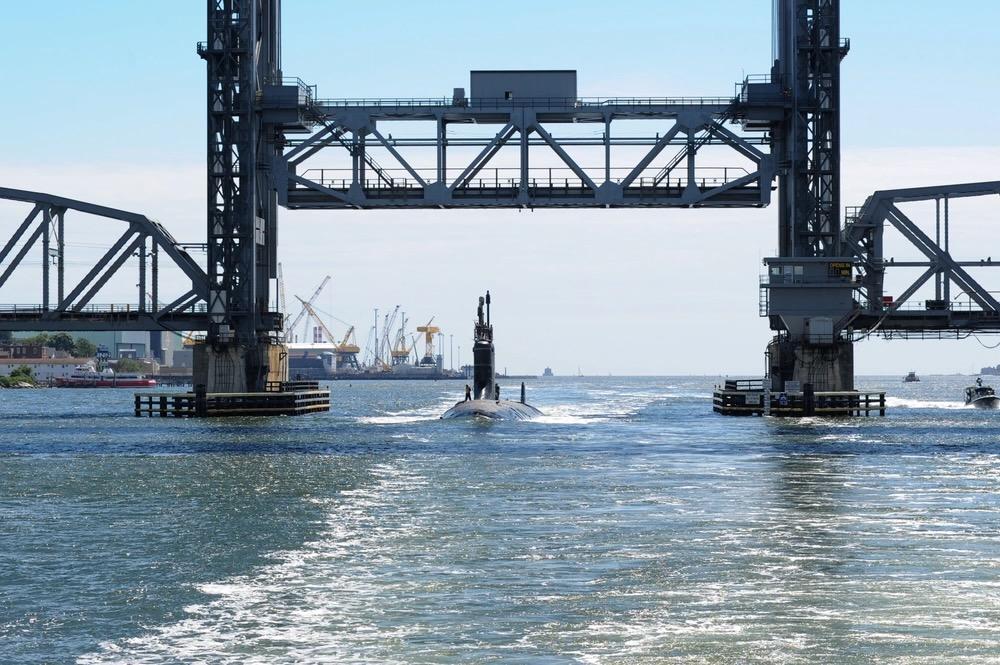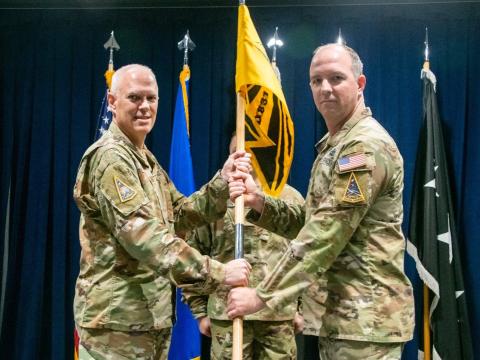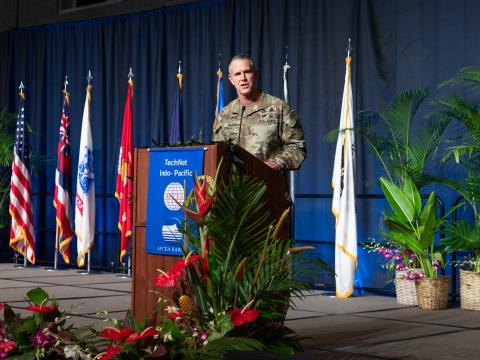Staffing, Supply Chain and Congressional Budget Processes Still Remain Challenges for U.S. Navy
In recent years, U.S. Navy priorities have been pretty low for Capitol Hill from a budgetary stand point, according to Rep. Joe Courtney (D-Conn.), who is on the House Armed Services Committee and serves as the ranking member of the House Armed Services Subcommittee on Seapower and Projection Forces.
“People asked why we even needed submarines,” said Courtney, speaking via video feed at the annual WEST conference in San Diego on January 29, to moderator and retired Adm. Jonathan Greenert, USN, former chief of Naval Operations.
“Today we really have more consensus and more agreement than I think people would expect based on most people's perception of Washington,” Courtney noted.
And while support for naval assets is greater than before, challenges remain, especially when it comes to personnel, supply chain issues and Congress’ budget delays. Concerning personnel, for Courtney, sea power is about people, so resolving this is important. The Navy needs to build up the next generation of sailors.
“At the risk of sounding like Barbra Streisand, I always think when you talk about this issue, it is about people,” he said. “This is in terms of both the filling of billets in the Navy and in the Coast Guard, and also in terms of submarine and Navy ship building and the industrial base. We really need to be focused on connecting, particularly younger people to the needs that we know exist.”
The National Defense Authorization Act (NDAA), passed at the end of December, featured quality of life provisions for sailors, including housing allowances, meal expenses, spousal access to work and improvements to housing. It aimed to boost personnel numbers through better pay, given that the Navy was 7,000 sailors short in 2023 in terms of recruitment. The NDAA measure focused on junior enlisted sailors, with a 14% pay raise for the E3 ranks and below. “This was to rebase or reset the pay level, particularly for that entry level group of service members,” the lawmaker shared.
It was really quite an extraordinary, bipartisan effort over the last 1.5 years, the congressman indicated—especially since the 118th Congress passed a low amount of legislation.
“This was not a highly productive Congress, if you look at just the numbers of bills that were enacted,” Courtney stated. “And [with] all of the other provisions, this [Navy] package was not cheap. There was definitely some pushback in the Appropriations Committee … but when this package came out of the NDAA House and Senate, I think there was a recognition that we really have to do this.”
Aside from the procurement budget delays, the lawmaker said he sees the industrial base and the workforce lagging behind, and to build what the Navy needs, especially ahead of the 2027 timeline of a potential war with China, industry needs to step up.
“The industrial base really hasn't been able to catch up, to those ships and subs and platforms that have been appropriated and funded,” Courtney stressed.
He cited the statistic that 35% of the U.S. workforce at the end of the Cold War was in manufacturing. Today that number is below 15%. And while the congressman does not necessarily think the country needs to get back up to 35%, what with artificial intelligence, robotic welding and manufacturing efficiency gains, there is clearly a dramatic gap.
One bright example is the Electric Boat company hiring 5,300 people in 2023, the largest number of hires in their 120-year history. And while some of those personnel were to replace retiring shipbuilders, the progress is notable.
“The fact of the matter is that we really do need to focus in terms of connecting young people, whether it's through trade schools, apprenticeships, pre-apprenticeship training programs,” he shared. “And the Navy has really embraced that in recent years, particularly for submarines construction, but frankly, it is an industrial-based initiative that extends beyond subs. It really is across the board, whether it's munitions, or aerospace.”

I don't want to get too giddy here [because] they're late. There's no question that the supply chain challenge is the biggest kink in the garden hose. That's got to get fixed. It is definitely still slowing down production cadence.
Courtney sees supply chain issues continuing to impact the scheduled release of the Virginia-class submarines. The USS Iowa was delivered before New Year’s and the USS Massachusetts and USS Idaho will come in 2025, and the USS Arkansas and USS Utah in 2026. “I don't want to get too giddy here [because] they're late,” he said. “There's no question that the supply chain challenge is the biggest kink in the garden hose. That's got to get fixed. It is definitely still slowing down production cadence.”
Courtney hopes that small business investments will help address some of the issues. New metal fabrication locations in industrial base that did not exist three years ago are popping up. And the shipyard in Philadelphia will now be getting some of that work.
Strategic outsourcing is happening in real time,” he suggested.
In Congress, the appropriators still have a final piece of the FY 2025 budget to finish, all while dealing with the spending freeze, funds being diverted to the border wall, the debt ceiling, and conformation votes in the Senate.
Lastly, the congressman does fully expect the new administration to submit an amended budget request for FY 2026. “They definitely will put their stamp on it,” he said.
WEST is co-hosted by AFCEA International and the U.S. Naval Institute. SIGNAL Media is the official media of AFCEA International.





Comments